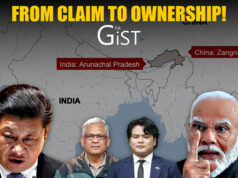Dr. Heather Stobaugh, Associate Director at Action Against Hunger, paints a stark picture of rising food insecurity in the wake of multiple global crises. Speaking on the 2025 State of Food Security and Nutrition in the World report, she outlined the drivers of the current food crisis and what must urgently change to meet global nutrition targets by 2030.
Between 2021 and 2024, a convergence of shocks pushed food prices sharply upward. The Ukraine war disrupted global wheat, corn, and fertilizer exports. Fuel prices surged post-COVID, raising transport and production costs. Climate events like droughts in the Horn of Africa worsened supply shocks, hitting the poorest hardest.
“Lower-income households spend 60-70% of their income on food,” Dr. Stobaugh noted. “When prices rise, they eat fewer, cheaper, often less nutritious meals.” Conflict-affected and displaced populations were especially vulnerable, as were women and rural communities. In some cultures, women eat last and least. They also bear the burden of caregiving, often without sufficient resources.
India stood out for cushioning its population from global price shocks. Key to this success was the country’s massive public food distribution system, food buffer stocks, and fertilizer subsidies. But while effective, such measures are resource-heavy and difficult to replicate in low-income nations. More viable are targeted cash transfers and subsidies for the most vulnerable.
Despite India’s affordability gains, child stunting and anaemia in women remain high. “Malnutrition is multifactorial,” said Dr. Stobaugh, citing poor dietary diversity, sanitation, and entrenched gender norms. Cultural practices around child feeding also worsen nutrient deficiencies, she said, underscoring the need for food fortification and behaviour change.
With just five years to meet global nutrition targets, time is running out. “2026 will be a make-or-break year,” Dr. Stobaugh warned. Without a reversal in declining global health and nutrition funding, progress may stall—or reverse.
Her call to action is clear: scale up proven nutrition interventions, integrate them into primary healthcare, and boost national and global financing. “We know what works,” she said. “We just need the political and financial will to act—now.”
In a career spanning three decades and counting, Ramananda (Ram to his friends) has been the foreign editor of The Telegraph, Outlook Magazine and the New Indian Express. He helped set up rediff.com’s editorial operations in San Jose and New York, helmed sify.com, and was the founder editor of India.com.
His work has featured in national and international publications like the Al Jazeera Centre for Studies, Global Times and Ashahi Shimbun. But his one constant over all these years, he says, has been the attempt to understand rising India’s place in the world.
He can rustle up a mean salad, his oil-less pepper chicken is to die for, and all it takes is some beer and rhythm and blues to rock his soul.
Talk to him about foreign and strategic affairs, media, South Asia, China, and of course India.




